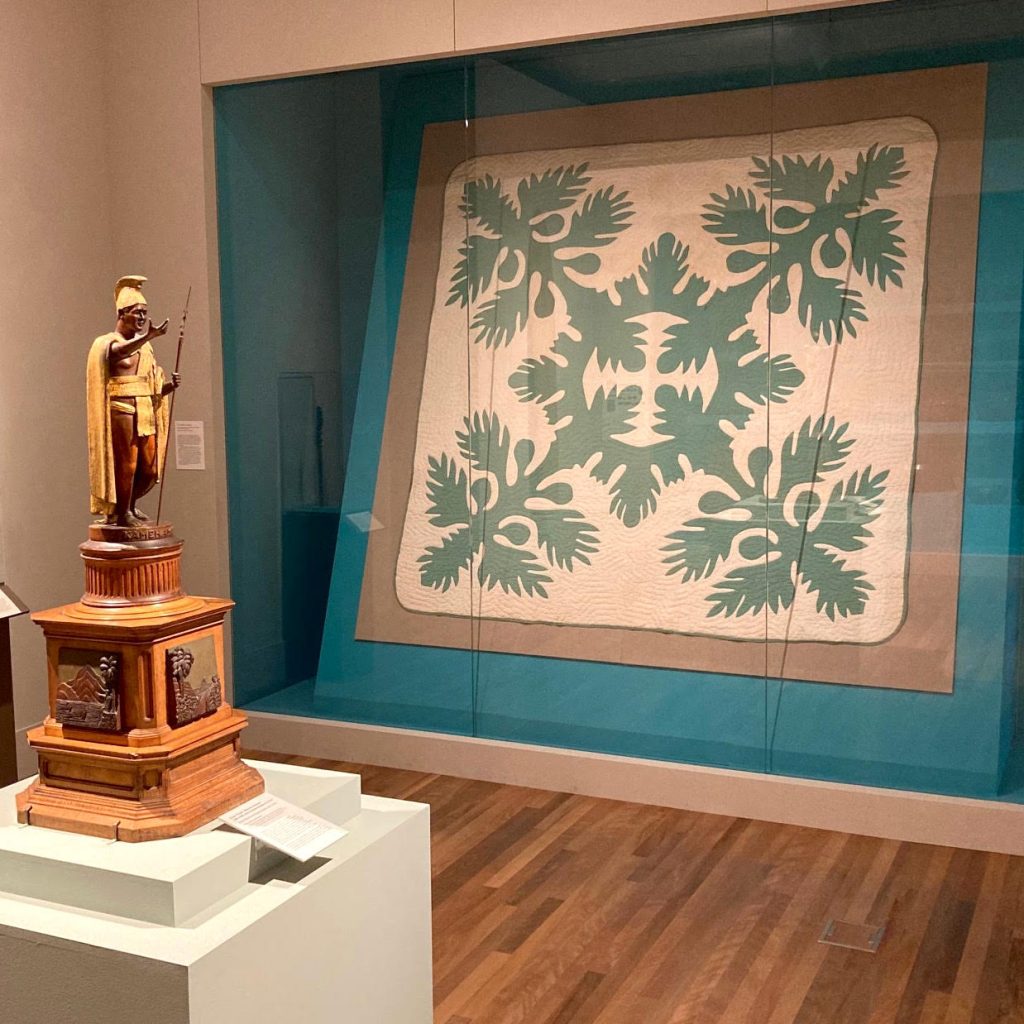Hawaiian quilts have a permanent home in new display case
A case has been modified and installed to accommodate HoMA’s latest textile rotation in the John Dominis and Patches Damon Holt Gallery of the Arts of Hawai‘i, and the brand new occupant is a very special Hawaiian quilt. The quilt, part of a thirty-six-piece collection, will be the first in a lineup that will rotate periodically. The case is located near the gallery’s entrance.
“Hawaiian quilts have a big following here in the islands and also abroad in Japan, so it’s a wonderful addition to always have a quilt on permanent display at the museum,” said Tory Laitila, Curator of Textiles and Fashion.
The art of quilting was introduced by American Protestant missionaries, who first arrived in the Hawaiian Islands in 1820. Women from the mission taught sewing and their New England method of patchwork quilting. Following the tradition of kapa (Hawaiian bark cloth), with its printed designs and patterns, Hawaiian quilts developed as whole-cloth quilting. There are several stories about how these applique patterns first developed, with many derived from plants.

‘Ulu (Breadfruit), circa 1930. Hawaiian quilt, cotton, hand appliqued and quilted, machine-stitched binding. Gift of Rosalie Young Parsons, 1986 (5803.1)
The ‘ulu (breadfruit) is an important food plant and was brought to Hawai‘i by early Polynesians and has many uses. It’s an excellent food source with a high starch content. The wood can be used as timber, the leaves as fine sandpaper in woodworking, and the sap—which also has medicinal properties—as an adhesive. The bark can be used to make kapa and cordage.
“Because of the belief in quilting that the ‘ulu pattern symbolizes growth and nourishment and therefore should be a beginning quilter’s first pattern, it’s truly fitting that this is the first inhabitant of the newly installed display case,” said Laitila. “It’s exciting that we now have a quilt case and a kapa case in the Arts of Hawaiʻi gallery.”